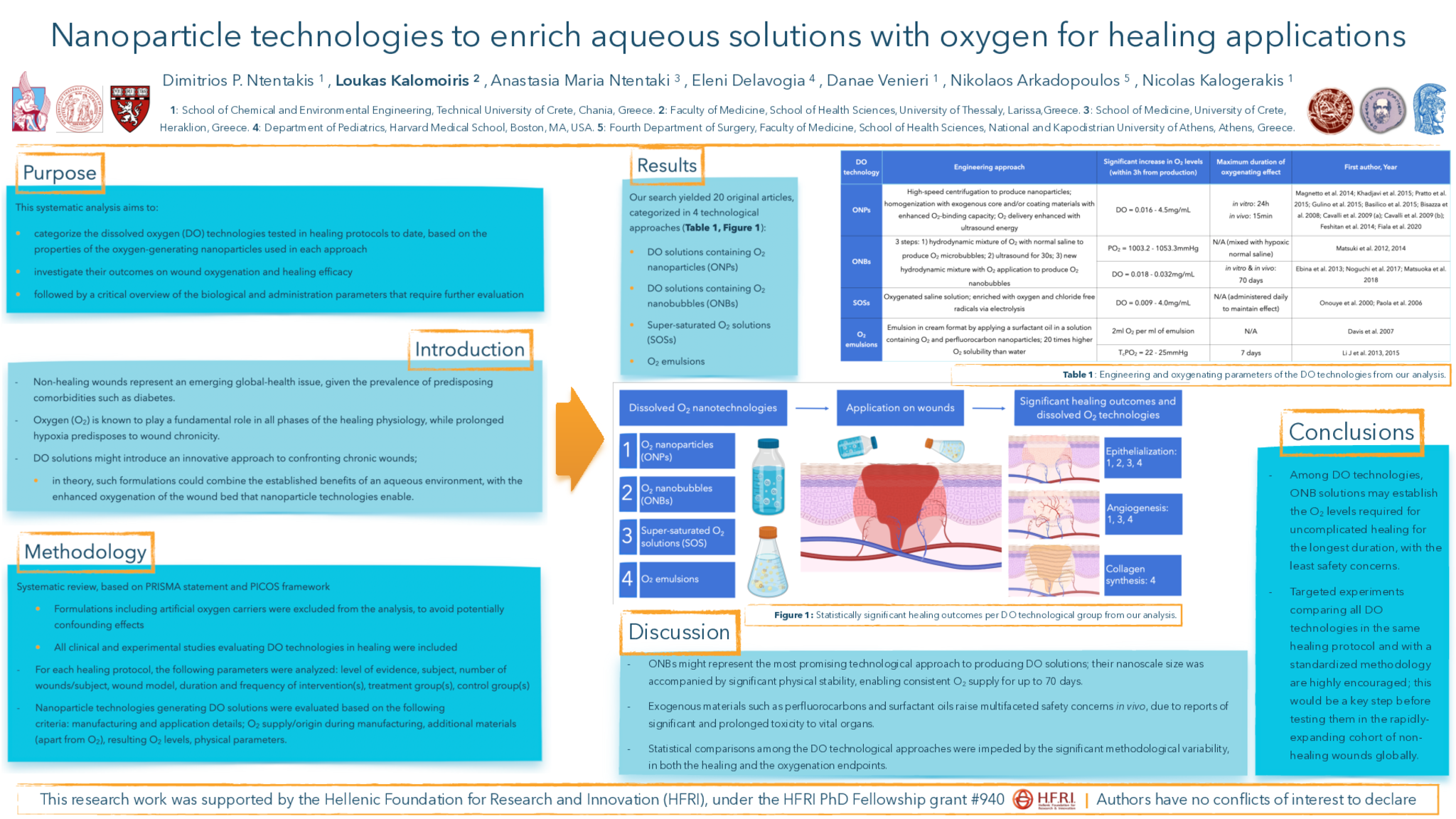Introduction/Purpose: Non-healing wounds are steadily emerging as a major global health issue, particularly in the upcoming decades. Despite their experimental efficacy, currently available biotechnologies that enhance wound oxygenation are still far from meeting this increasing demand. Aqueous solutions enriched with novel oxygen (O2) nanotechnologies comprise a highly-promising strategy in the field, and their biomedical potential has been robustly investigated in the last five years. Methods: A systematic literature search for both experimental and clinical studies evaluating dissolved O2technologies was conducted. Studies were categorized based on the engineering approach during their manufacturing. Additional methodological parameters were recorded, to assess the ensuing O2 levels and the healing efficacy for each technological group. Results: Twenty articles met our inclusion criteria. The studies were categorized in the following four technological groups: O2 nanoparticles (10), O2 nanobubbles (5), supersaturated O2 solutions (2), O2emulsions (3). All technologies were shown to enhance oxygenation, each to a variable degree. They also achieved at least one statistically significant outcome in one of the major healing endpoints that were assessed: epithelization, angiogenesis, and collagen synthesis. Statistical comparisons among the technologies were impeded by the vast methodological variability. Conclusions: Among the technologies we studied, solutions enriched with O2 nanobubbles appear to combine the appropriate safety with the desired healing potential for wound oxygenation. Targeted questions that will be pursued via standardized healing protocols are highly encouraged, in order to bring these innovative biotechnologies one step closer to clinical applications.
- 99 views




